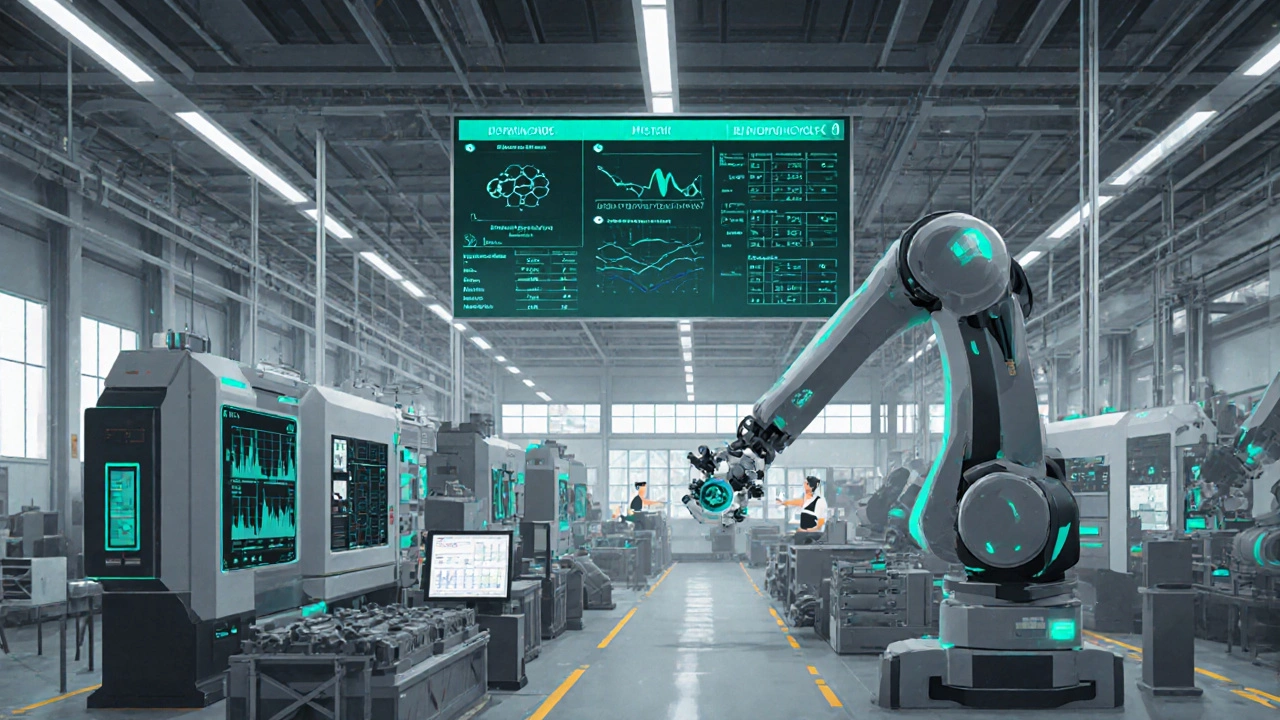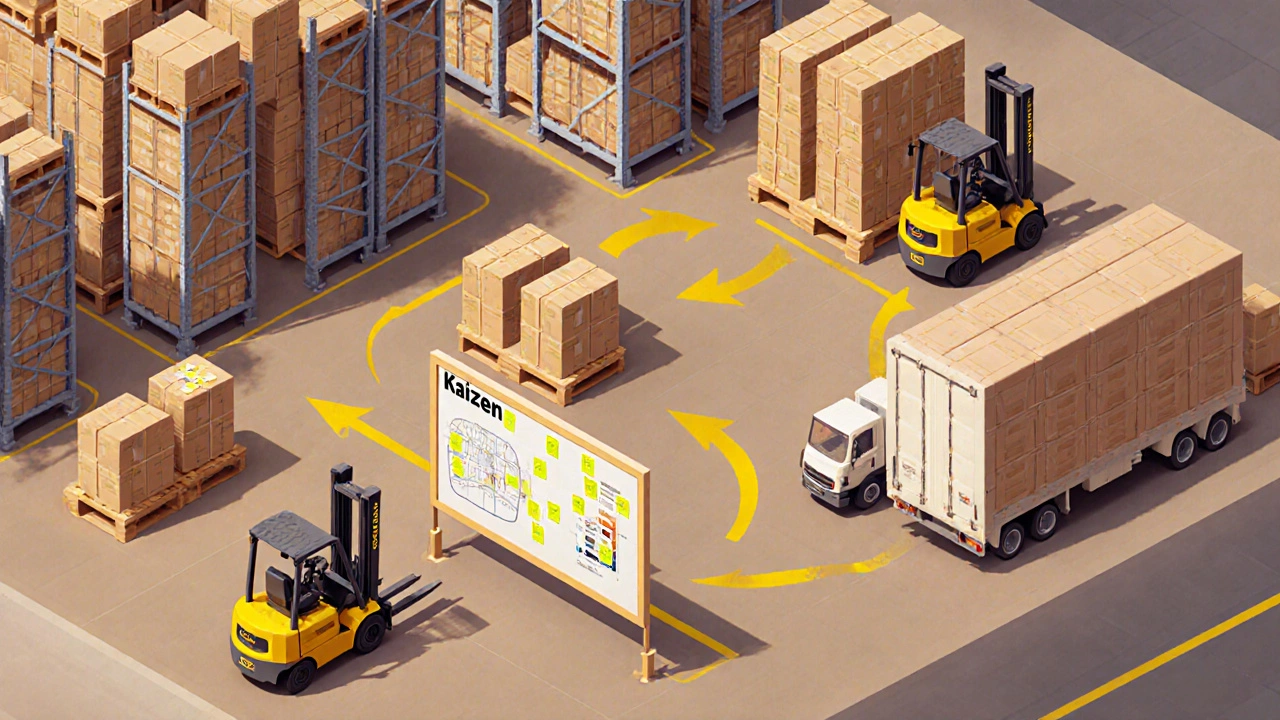Optimal Batch Size Calculator
Calculate the optimal batch size to minimize total production costs based on setup costs, holding costs, and demand rates. This helps prevent excess inventory while maintaining efficient production flow.
Results
Key Metrics
When you hear the word "manufacturing," you probably picture a huge factory floor humming with machines. But turning raw material into a finished product isn’t magic-it follows a clear, repeatable road map. Understanding the manufacturing steps helps you spot bottlenecks, cut waste, and launch a startup that actually delivers.
Manufacturing Process is a systematic series of activities that transforms raw inputs into market‑ready goods. It typically unfolds in seven distinct phases, each with its own goals, tools, and metrics. Below, we walk through each phase, share real‑world tips, and sprinkle in the key concepts you’ll need to keep the line moving smoothly.
Step 1: Concept & Market Research
Before any metal is cut or plastic molded, you need to know Product Design should solve a real problem. This phase combines idea generation, competitor scouting, and customer interviews. A simple way to validate is to build a one‑page canvas that outlines the value proposition, target segment, and price point. In many successful startups, this stage trims at least 40% of initial ideas, saving months of wasted tooling.
- Identify pain points through surveys or social listening.
- Sketch low‑fidelity prototypes (paper or digital).
- Run a small‑scale pre‑order campaign to gauge demand.
Step 2: Detailed Design & Engineering
Once the concept is vetted, engineers translate sketches into detailed drawings, CAD models, and bill‑of‑materials (BOM) lists. This is where tolerance specifications, material selections, and manufacturability reviews happen. For a niche electronics startup, choosing surface‑mount components over through‑hole can shave 30% off assembly time.
Key activity: conduct a Design‑for‑Manufacturing (DFM) review with the future supplier. Catching a design flaw early prevents costly re‑tooling later.
Step 3: Procurement & Supplier Management
With a finalized BOM, the next phase is Procurement. Source raw materials, components, and sub‑assemblies from reliable vendors. Many manufacturers sign a multi‑year contract to lock in price and guarantee supply continuity. In New Zealand, the NZ Trade & Enterprise program offers grants for securing overseas suppliers, which can be a lifesaver for small startups.
Tips for effective procurement:
- Qualify at least three suppliers per critical part.
- Negotiate lead‑time clauses to avoid stock‑outs.
- Set up an electronic purchase order (e‑PO) system for traceability.

Step 4: Production Planning & Scheduling
Before the first machine starts, you need a solid Production Planning strategy. This includes capacity analysis, work‑center allocation, and Gantt chart creation. Use ERP software to simulate different batch sizes; the goal is to hit the sweet spot where unit cost is lowest without inflating inventory.
Common pitfalls:
- Over‑estimating demand and ending up with excess finished goods.
- Under‑estimating changeover time, which can cause missed delivery dates.
Step 5: Manufacturing Execution & Assembly
Now the shop floor roars to life. Whether you run a manual assembly line or an automated CNC cell, the Assembly Line must follow standard operating procedures (SOPs) that define each work step, tool, and safety check. Real‑time data capture-via barcode scanners or IoT sensors-feeds back into the production dashboard, letting managers spot slowdowns instantly.
Lean tip: implement a one‑minute “mistake proofing” (poka‑yoke) at any station where defects commonly occur. This can reduce scrap rates by up to 25%.

Step 6: Quality Control & Assurance
Every batch goes through Quality Control checks. Depending on the product, this might include dimensional inspection with CMM machines, functional testing, or statistical process control (SPC). Adopt a “first‑time‑right” mindset: if a defect is found, halt the line, perform a root‑cause analysis, and apply corrective action before resuming.
Metrics to track:
- Defects per million opportunities (DPMO).
- First‑pass yield (FPY).
- Rework cost as a percentage of total labor.
Step 7: Logistics, Inventory & Continuous Improvement
The final phase bundles Logistics, Inventory Management, and Continuous Improvement. Finished goods are packed, labeled, and shipped to distributors or directly to customers. Use a warehouse management system (WMS) that syncs with your ERP to maintain optimal stock levels-usually a few days of safety stock for fast‑moving items.
Continuous improvement frameworks like Kaizen, Lean, or Six Sigma keep the cycle moving. Schedule a monthly “process audit” where cross‑functional teams review key performance indicators (KPIs) and brainstorm small‑scale experiments. Even a 2% efficiency gain per quarter compounds into a massive competitive edge over a year.
| Step | Main Goal | Key Tools | Typical KPI |
|---|---|---|---|
| 1. Concept & Market Research | Validate demand | Customer surveys, MVP tests | Pre‑order conversion rate |
| 2. Detailed Design & Engineering | Finalize specs | CAD, DFM review | Design change requests |
| 3. Procurement | Secure supplies | e‑PO, supplier scorecards | On‑time delivery % |
| 4. Production Planning | Schedule resources | ERP, capacity models | Overall equipment effectiveness (OEE) |
| 5. Manufacturing Execution | Build product | SOPs, IoT sensors | Cycle time |
| 6. Quality Control | Ensure compliance | SPC, CMM, functional test rigs | First‑pass yield |
| 7. Logistics & Improvement | Deliver & refine | WMS, Kaizen boards | On‑time shipment % |
Quick Tips for Startup Founders
- Start small: pilot a single product line before scaling.
- Leverage local incentives: New Zealand’s Regional Business Partner offers grants for equipment purchase.
- Build a cross‑functional core team-engineer, supply‑chain manager, and quality lead.
- Invest early in data capture; dashboards save hours of manual reporting.
- Never skip the post‑mortem after each batch; lessons learned are gold.
What is the difference between production planning and scheduling?
Production planning sets the overall strategy-how many units to make, which resources are needed, and what inventory targets to hit. Scheduling drills down to the day‑by‑day or hour‑by‑hour assignment of tasks to specific machines or workstations.
How can a startup reduce waste in the manufacturing steps?
Adopt lean tools like value‑stream mapping to spot non‑value‑adding activities, use just‑in‑time inventory to cut excess stock, and implement poka‑yoke devices to prevent defects before they happen.
What KPI should I watch first when launching a new manufacturing line?
Overall Equipment Effectiveness (OEE) is a solid starting point because it combines availability, performance, and quality into a single, actionable number.
Is outsourcing the entire manufacturing process a good idea for a small startup?
Outsourcing can reduce capital spend, but you lose direct control over quality and lead times. A hybrid model-keep critical design and quality steps in‑house while outsourcing high‑volume production-often offers the best balance.
What role does continuous improvement play after the seven steps are complete?
Continuous improvement turns the manufacturing process from a static checklist into a living system. Regular Kaizen events, 5S audits, and data‑driven experiments keep costs down and product quality up, ensuring the line stays competitive.
